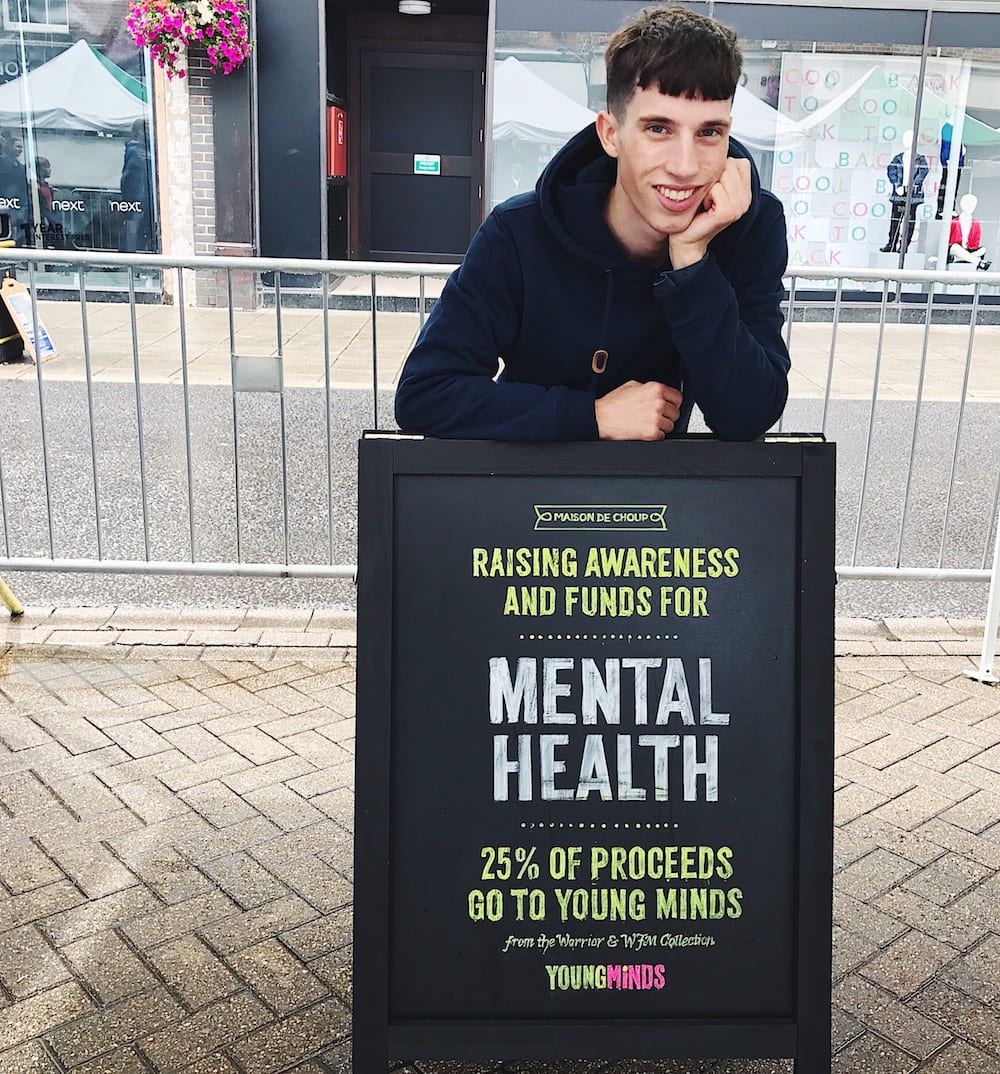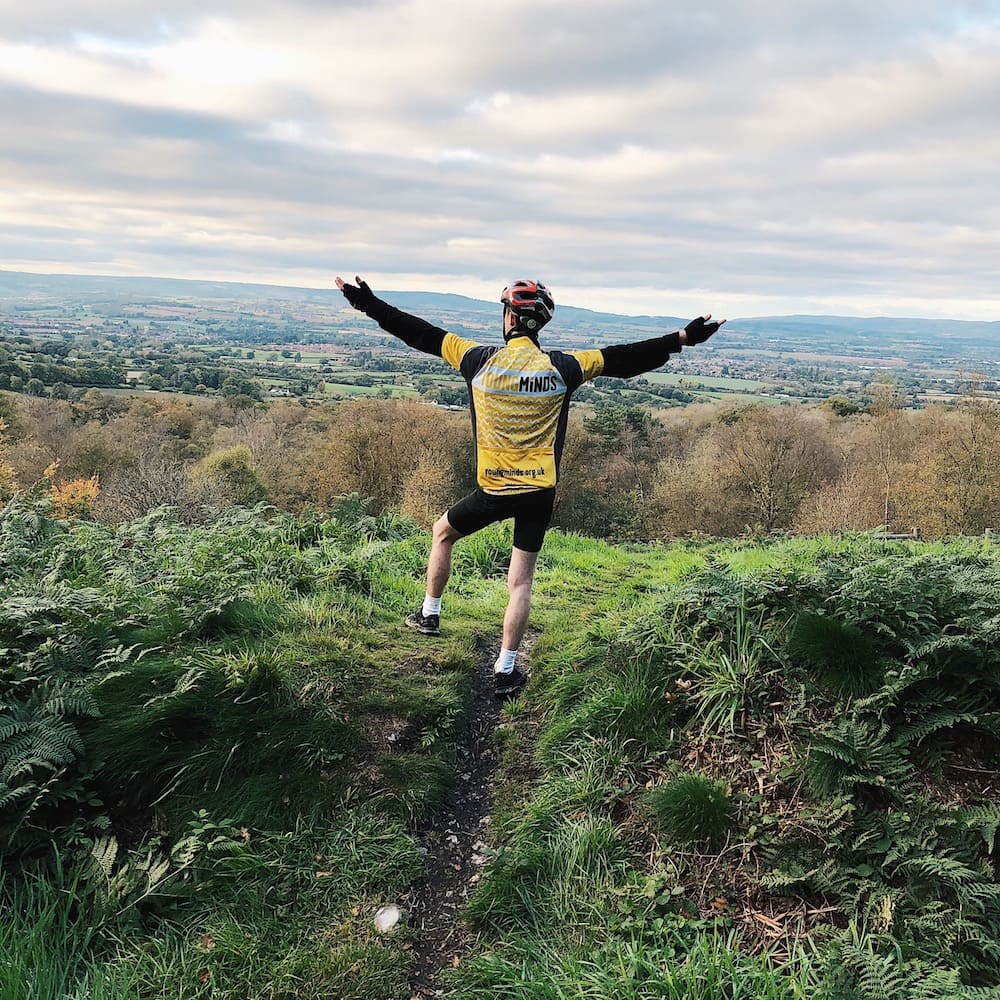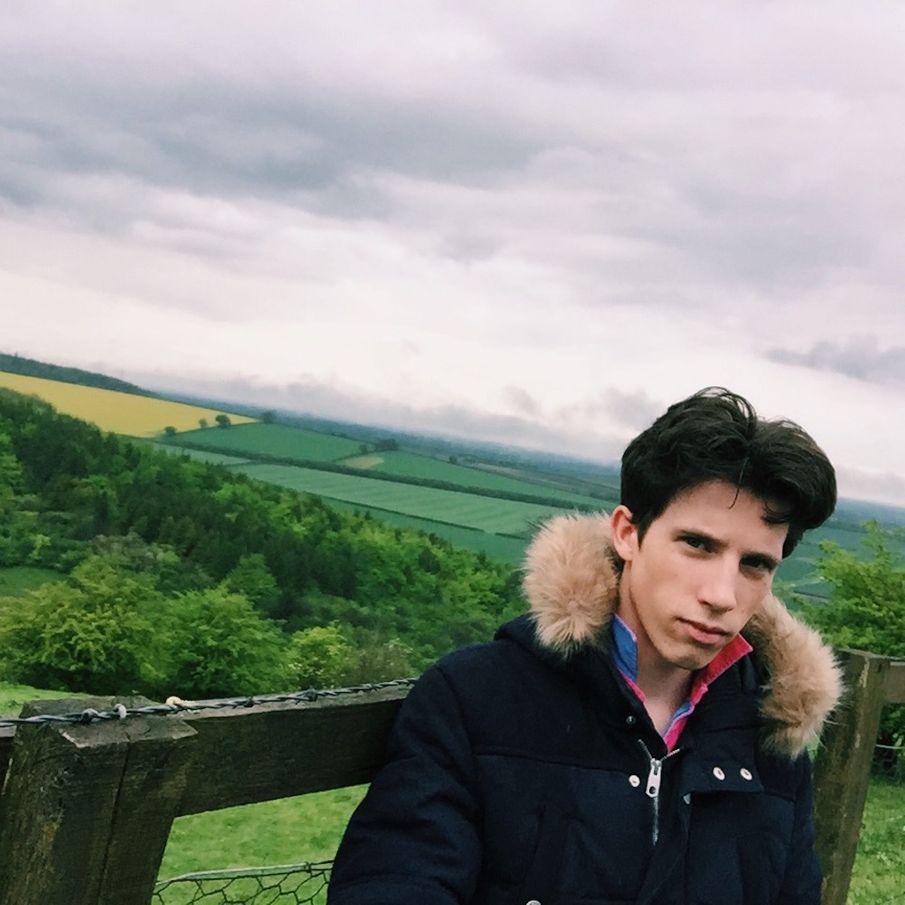MDMA became a catalyst for anxiety so severe, that for three years George Hodgson felt he couldn’t leave his bedroom. But in his battle with crippling anxiety, OCD and paranoia, George found comfort through creating a fashion brand that raises awareness about mental health and helps fund a charity supporting other young sufferers
It’s 8 July 2012, a date I will never forget. I’m sitting in a small tent with three friends, and it’s pouring with rain outside. One friend opens a small, clear bag and starts rolling up a £5 note. Taking it in turns, we inhale a browny-white powder called MDMA – to have “a good time”. We were at NASS Festival, and the experience I had was the complete opposite of a good time. I was just 16 years old.
I’ve always been an anxious person. Even as a boy I suffered from anxiety. I remember being at primary school and needing extra support because I always had so much energy. I used to run everywhere – “Why walk when you can run?” I thought.

George Hodgson
Everything changed when I moved to secondary school though; I had a large friendship group and we all stuck together. My anxiety became a thing of the past, and as the years went on I completely forgot about it.
But it was only three months after taking the drug that I hit the darkest period of my life. I was suffering from panic attacks and I thought everything I touched had MDMA traces on it, leading me to wash my hands at least 50 times a day. The MDMA had become the catalyst for my severe anxiety, so bad that for three years I couldn’t actually leave my bedroom. I became completely paranoid.
The paranoia I had surrounding MDMA, and being convinced I was permanently on the drug, had consumed me. I didn’t even particularly enjoy the experience I’d had when I was on it, and it was terrifying. Anxiety had found my weakness, and it wore me down. I don’t believe MDMA was the cause of the anxiety, as I had always suffered, but it was certainly the cause of the OCD and psychosis I was experiencing.
One of my behaviour patterns during my illness was the need to be with one of my parents at all times if I left the house. To that end, I would often go to my father’s office. He is a graphic designer, and as I spent more time there, I began to scribble. One day, half way through my therapy, when I began to feel a little better, I came up with the idea of translating some of my anxiety drawings on to T-shirts. My father told me this was feasible.
Encouraged, my brand, Maison de Choup, all based around mental health, was born and in 2015 was launched to the world.

Maison de Choup played a huge part in my recovery. Without having anything to do, I had really started to lose my mind. But with this project I found focus, purpose, and something to get up for in the mornings. It pushed me to do things that I would never have thought I was capable of doing. Attending networking events, meeting incredible people, and having to interact with complete strangers almost every day – for someone who was suffering from severe anxiety, who couldn’t actually leave the bedroom for three years, to actively go out and want to talk to people was almost surreal.
For me, Maison de Choup isn’t about being the next big fashionable brand, it’s all about creating a brand that is synonymous with mental health. When people say “Maison de Choup”, I don’t want them to think “Oh yeah, they sell cool clothes”, I want them to think: “That’s that brand helping young mental illness sufferers through fashion.”
It’s about creating and spreading awareness of mental health through fashion, connecting people, and reassuring young people who suffer that they can do amazing things. I’m opening up, telling people about my battle with severe anxiety, OCD, and how drugs affected me so cataclysmically, using my brand as a way of expressing my feelings. Vanity Fair magazine summed up what Maison de Choup is about in one line: “The fashion brand with a mental health cause at its heart.”
I’m partnered with the YoungMinds charity. I was lucky that my parents could send me to private mental health care, but for the young people who aren’t in the same fortunate position that I was, I don’t know what they do. The waiting list for child and adolescent mental health services is now upwards of a year, and within that time frame something unimaginable could happen.
That’s why I want to give back to YoungMinds. I was that young person suffering, and I know what it’s like to be in such a dark place. It is so important to me that I can give back to a charity that helps young sufferers.

In October 2017, for World Mental Health Day and the YoungMinds #HelloYellow campaign, I decided to take on the challenge and ride 147 miles to raise money. So I set about training for this mission, something I had never done before. On the day, I finished my bike ride in 13 hours, raising more than £900 for YoungMinds.
I still suffer; but remember, we all suffer. I know I’ll never get over my anxiety and OCD, but I am now able to employ coping mechanisms to deal with it in my own way. Every day is a new day. I now speak at schools, colleges and universities about my experiences, to encourage and inspire other sufferers that there is light at the end of the tunnel and that they will get through it. It just takes time.
Visit maisondechoup.com to find out more about George’s fashion brand, with mental health awareness sewn into its core. Follow George on Twitter @imgeorgehodgson
Taking MDMA transformed George’s anxiety, resulting in him struggling to function with this severe mental illness. But when he discovered he could express his emotions through art, he grew in confidence, purpose and found he could address his illness. George’s story gives us insight into the power of taking your time with finding your own form of therapy, and having compassion for yourself while you do. We can challenge and beat our anxiety, one day at a time.


Comments